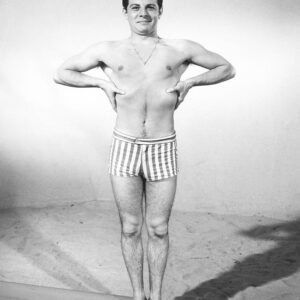Teen Dream, Merch Machine: A Quiz
It is an inviolable law: I will desire, nay, require a particular book immediately upon its donation.
So, it happened with Teenage Confidential: An Illustrated History of the American Teen by Michael Barson and Steven Heller, a tome that languished on my bookshelf for over a decade before it was finally discarded in what I choose to believe my sentient books refer to as “the Great Purge of 2023.”
Mere months later Sara, Rebecca, and I landed on “Tiger Beat Theory” as the next issue of Dilettante Army.
“Damn,” I thought. “Damn you, minimalism, and damn you, enticingly adorable Little Free Libraries.”
Luckily, (divinely?) the research gods were in this instance kind. I found a used replacement copy online in about three minutes (and for under $20). I stand before you a woman transformed: humbled, pro-hoarding, 2Blessed2BeStressed.
I first ran across Teenage Confidential in 2010 while researching the photographic conventions of portrait photography in 20th-century American high school yearbooks.
While a quick read at 132 pages, Teenage Confidential is densely illustrated. It feels at times frenetically jam-packed with images of cultural texts, what Barson and Heller refer to as “teenage artifacts,” aimed at the American teen: films, novels, comics, Top Forty hits, magazines, television shows, and even, you guessed it, yearbooks. Reading through Teenage Confidential feels less like a romp through adolescence and more like a sprint through a hazing ritual for a blurrily defined jingoistic fraternity.
Barson and Heller’s argument is this: while the American teen may seem like an ever-present ubiquitous trope, the truth is that the teenager as an identity category didn’t really exist until the nineteen thirties and forties. Obviously, there were always people who had been alive for more than ten years and fewer than twenty, but the subject position, and the socio-economic category of the American teen, emerged as a result of both rampant anxieties regarding the fates of increasingly unsupervised young people in Depression and war-time America and post-World Word II affluence.
Using textual artifacts as their guides, Barson and Heller outline how concepts of the American teenager developed over time. The demure KleenTeen adults-in-training of the thirties are threatened by reckless and lascivious juvenile delinquents in the forties and fifties, who evolve into the rock-obsessed super-fans of the fifties, who then become the disenfranchised youths of the turbulent sixties.
While the particular attributes of the American teen may morph over time, one thing stays the same: throughout the years, the teenager remains a marketable identity category, worthy of media made for and about them. And, when I say “worthy” I’m not making a moral claim. I’m purely saying that it was and is monetarily worth the trouble for companies and advertisers to target teenagers (Barson and Heller point to a 1959 Life magazine article that estimated teens at that time brandished $10 billion in discretionary income).
But, turning teens into model consumers is about more than simply making a quick buck. Leafing through Teenage Confidential I am struck by the fervent, scarcely contained anxieties expressed in the cultural texts Barton and Heller analyze. There is an overwhelming feeling that all of this energy and potential must go somewhere and do something. The same vitality that may once have been characterized as “youthful exuberance” is now, wielded by adolescents, palpably threatening, even combustible.
To follow the trajectory of the American adolescent is to witness the crushing efficacy of capitalism. By proficiently and dexterously manufacturing deficiencies, hegemonic systems ensure that teens transition smoothly and seamlessly into model consumers and workers.
The message is clear: You can’t vote like an adult, and we certainly don’t want you to be fucking like one, but you can buy.
This leads me to DA’s most recent endeavor, the Dilettante Army Surplus Store, in which we consider what it means, and how it feels, to design and sell things:
- without trying to make a bunch of money.
- without cultivating a narrative of lack.
The Dilettante Army Surplus Store has, so far, been an invigorating exercise in imagination and cooperation. I anticipate that watching merch infiltrate the real world will elicit a range of emotional responses: validating, vulnerable, and anti-climactic, in turn.
If you’re interested, this quiz, which hits some high points in the evolution of the American teen, will match you up with a piece of DA merch. None of these consumer goods will make you whole, or loveable, or ageless, but they can, perhaps, still be useful, even enjoyable. Only time will tell…
















Dilettante Mail
Get updates from us a few times a year.